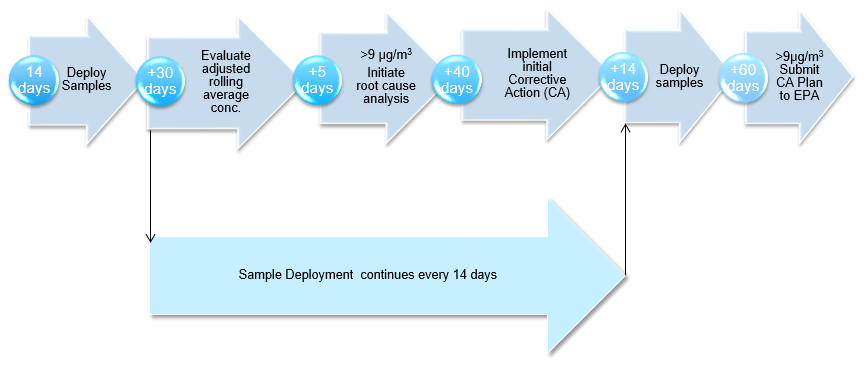How Does It Work?
What Is the Process for Monitoring?
The technology being used is a series of passive diffusive absorption sampling locations to monitor fenceline concentrations for benzene. Basically, we a have series of small tubes filled with an absorbent which hydrocarbons will be absorbed and be retained on the tube over a two week period. We collect the tubes every two weeks and send to the laboratory to analyze the concentration on the tubes to determine the average ambient air concentration for the two-week sampling period. Another set of tubes is placed immediately after monitoring the next two week period. Monitoring samples are in place and collecting data for ambient air concentrations every day.
What does ExxonMobil do if values are greater than the action level?
We conduct a Root Cause and Corrective Action Analysis (RCA) if rolling annual average benzene concentration exceeds the action level of 9 ug/m3. The RCA process has a specific timeline for completion and reporting to EPA. These steps include:
- Initiate root cause analysis within 5 days of determining exceedance
- Implement internal corrective action within 45 days of determining exceedance
- First sampling results after completion of identified corrective actions must demonstrate effectiveness by results <= 9 ug/m3.
- If demonstration unsuccessful, then site has 60 days to submit new corrective plan to EPA for review (publicly available).
If you have any questions on RCA process or activities, please contact us.
